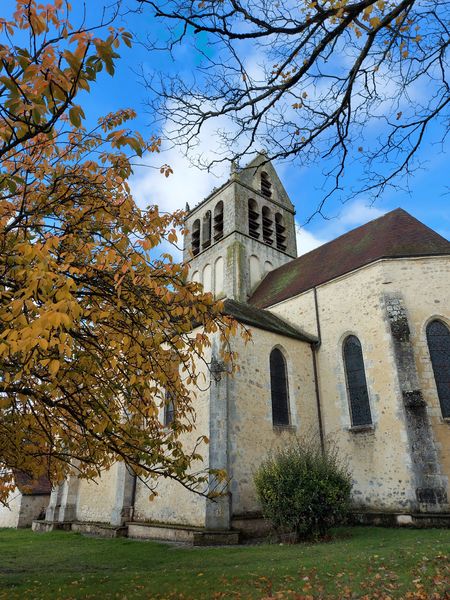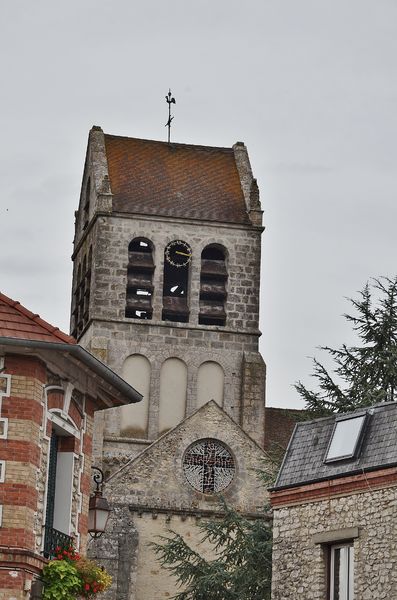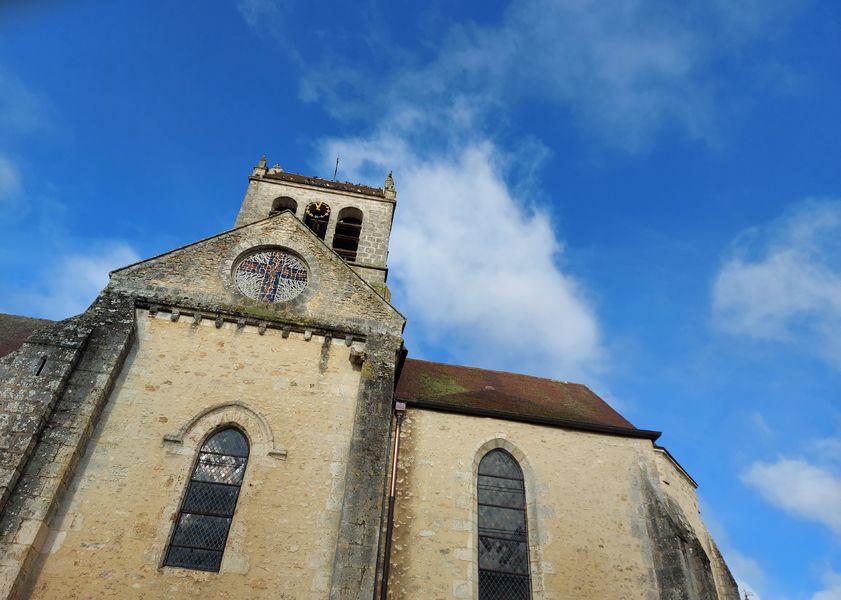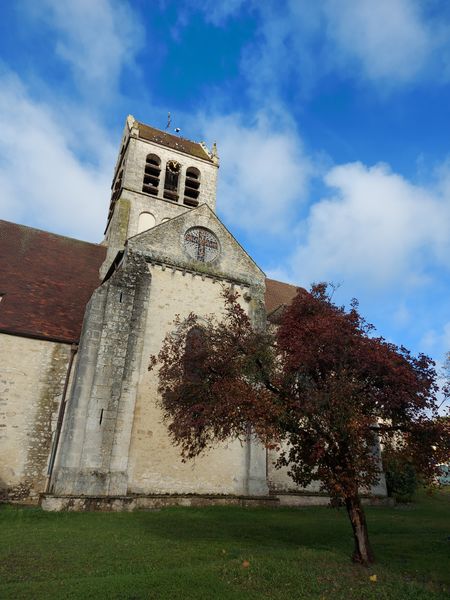Eglise Saint-Barthélémy
Boutigny-sur-Essonne
Patrimoine_culturel
The church of Boutigny-sur-Essonne was built during the 12th century and is full of medieval vestiges.
Coordonnées
rue de la Ferté Alais91820 Boutigny-sur-Essonne
06 88 57 62 12
01.64.98.80.57
The charming church of Boutigny-sur-Essonne was built during the 12th century. Despite its different restorations through time, a lot of medieval vestiges from its original building still remain : the portal, the rib vaults and the capitals of the transept. The bell tower has a Roman and ogival style and was once covered with an arrow on the roof, but sadly, it was destroyed by a hurricane in 1741. At every corner of the bell tower, there is a stone lion holding the coats-of-arms of several families that ruled in Boutigny.
The nave dates from the 14th century. Between 1654 and 1776, nearly 180 burials were done in the church. There is also a hidden room under the church where a lot of tombstones of the family Rennepont were found. A funerary monument for the marquises de Pons Rennepont can be seen inside the church. There is also a smallest monument finely chiseled in 1837 in honour of Catherine de Chestret, marquise de Pons Rennepont.
During the 19th century, the church had some work done, especially the creation of a big spandrel on the main portal and representing the flagellation of Christ. This remarkable work is nowadays exhibited in the Louvre museum and the spandrel of the church is a moulding.
The church has some very nice furniture. The bell made of bronze is named Marie and was installed in 1557, and then restored in 1998. Inside the church, we can see two oils on canvas made by the famous neo-classical painter Jean-Baptiste Wicar, especially a representation of Saint-Jean-Baptiste. The church has been classified as part of the Monuments Historiques since 1925.
It is dedicated to Saint-Barthélémy (Saint Bartholomew), one of the twelve apostles of Christ. He is the patron saint of butchers and tanners. He is supposed to have evangelized numerous areas until West India. He died in Armenia when he was evangelizing a part of the country.
SOURCE: Mairie de Boutigny-sur-Essonne, “Le Patrimoine Religieux de Milly-la-Forêt et de la Communauté de Communes des 2 Vallées” des Amis de Milly-en-Gâtinais et Environs, Parc Naturel Régional du Gâtinais Français
The nave dates from the 14th century. Between 1654 and 1776, nearly 180 burials were done in the church. There is also a hidden room under the church where a lot of tombstones of the family Rennepont were found. A funerary monument for the marquises de Pons Rennepont can be seen inside the church. There is also a smallest monument finely chiseled in 1837 in honour of Catherine de Chestret, marquise de Pons Rennepont.
During the 19th century, the church had some work done, especially the creation of a big spandrel on the main portal and representing the flagellation of Christ. This remarkable work is nowadays exhibited in the Louvre museum and the spandrel of the church is a moulding.
The church has some very nice furniture. The bell made of bronze is named Marie and was installed in 1557, and then restored in 1998. Inside the church, we can see two oils on canvas made by the famous neo-classical painter Jean-Baptiste Wicar, especially a representation of Saint-Jean-Baptiste. The church has been classified as part of the Monuments Historiques since 1925.
It is dedicated to Saint-Barthélémy (Saint Bartholomew), one of the twelve apostles of Christ. He is the patron saint of butchers and tanners. He is supposed to have evangelized numerous areas until West India. He died in Armenia when he was evangelizing a part of the country.
SOURCE: Mairie de Boutigny-sur-Essonne, “Le Patrimoine Religieux de Milly-la-Forêt et de la Communauté de Communes des 2 Vallées” des Amis de Milly-en-Gâtinais et Environs, Parc Naturel Régional du Gâtinais Français
Prestations, conforts et services
- French
Opening times
From 01/01 to 31/12, daily.






